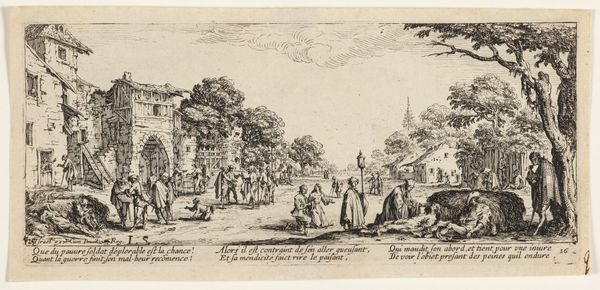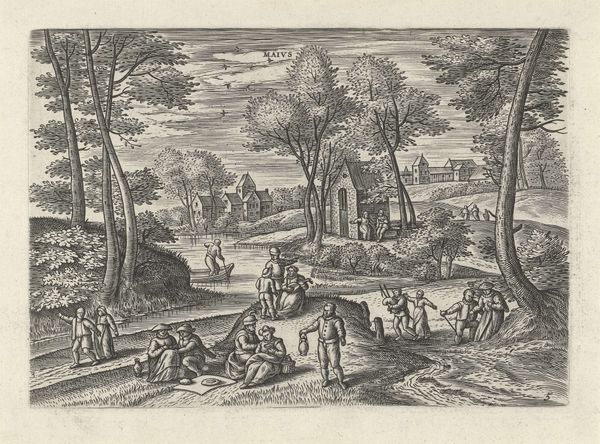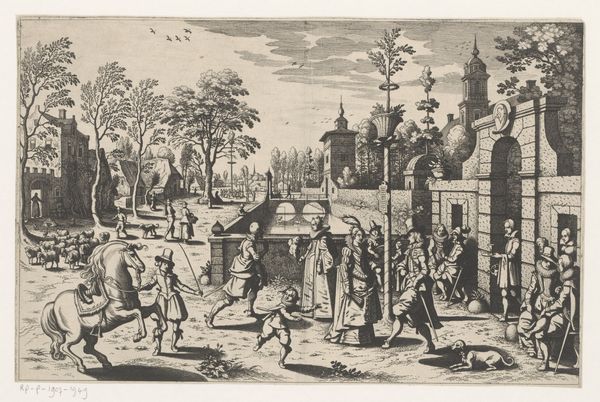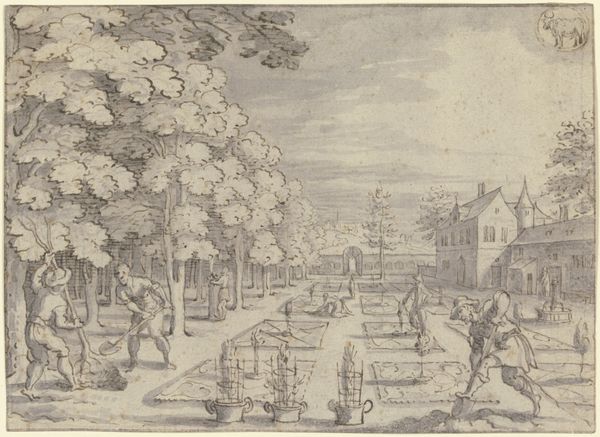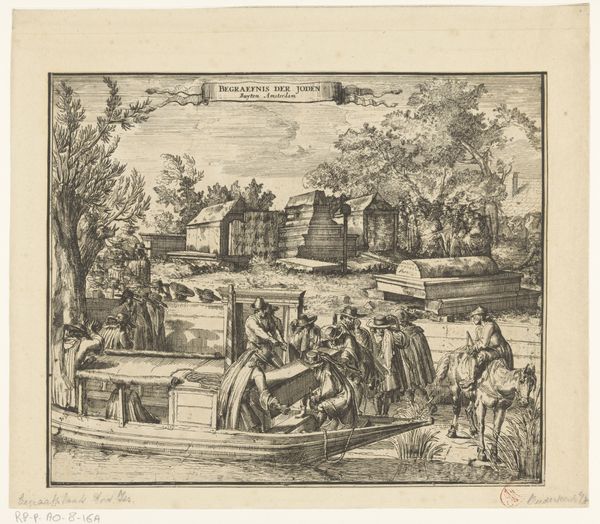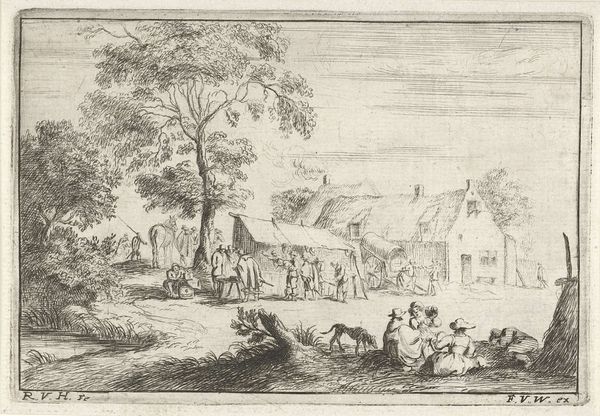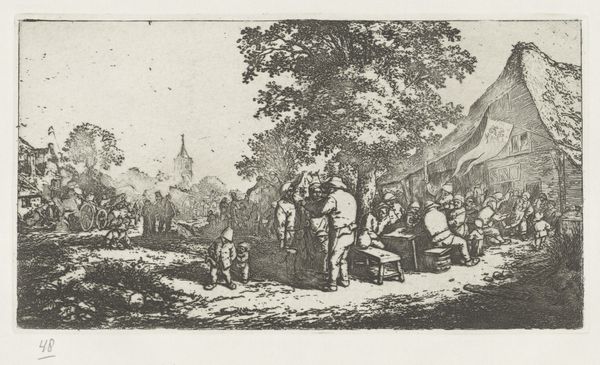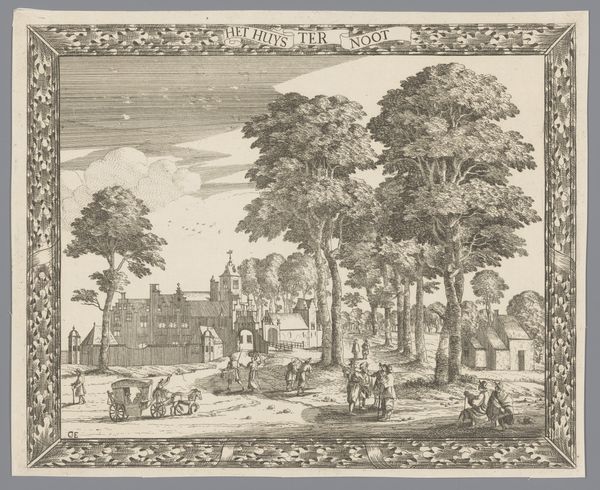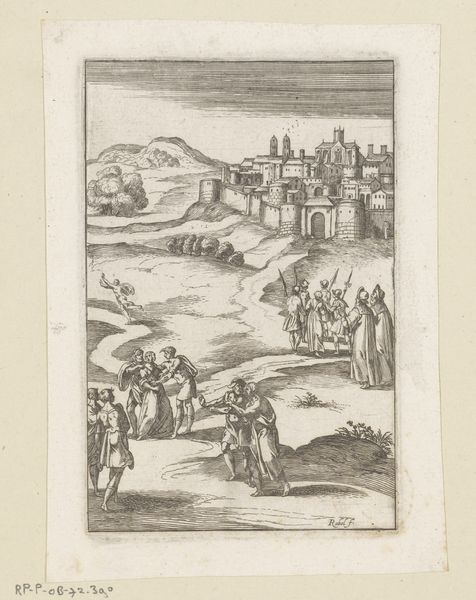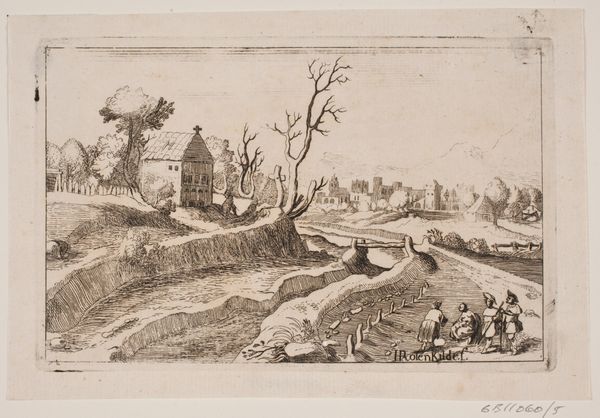
Landschap met de parabel van de zaaier en een kasteel in de achtergrond 1598
0:00
0:00
engraving
#
dutch-golden-age
#
landscape
#
figuration
#
line
#
history-painting
#
engraving
#
realism
Dimensions: height 128 mm, width 172 mm
Copyright: Rijks Museum: Open Domain
Curator: Looking at this artwork, "Landscape with the Parable of the Sower and a Castle in the Background," a 1598 engraving by Pieter Bast currently residing here at the Rijksmuseum, I’m struck by the seemingly disparate elements. What’s your first take on it? Editor: The engraving’s linear quality gives it a feeling of crisp deliberation, and the way Bast plays with foreground and background gives me a sense of depth—even tension between the act of scattering seed and the imposing castle. It suggests the vulnerability of creation against established power, the risk of hoping against something monolithic. Curator: Precisely. This visual contrast becomes crucial when understanding it. The parable is foregrounded, drawing attention to the common sower and his simple act, juxtaposed with the looming castle. Bast created it during a time when the Dutch Republic was actively constructing its identity against the backdrop of aristocratic structures. Editor: So, the act of sowing seed isn't merely a pastoral scene, but laden with meaning— perhaps about the risks and potential of sowing the seeds of revolution or change, or the hope for a fruitful new era. We have to see beyond surface representation and consider what the artist believed they could represent with that era’s established symbol language. What can we uncover regarding the choice of those objects depicted, and also, of their style? Curator: Absolutely. Bast was working within a specific social context where agriculture and land had potent social implications. By depicting the parable of the sower within a broader landscape dominated by this structure, he invites a dialogue between religious teachings and socio-political realities, exploring the agency of the individual in an ostensibly determined system. Furthermore, the realistic line engraving mirrors the burgeoning realism of the Dutch Golden Age—art capturing real life. Editor: So it’s almost as if the style itself becomes another symbol—a commitment to the representational reality against some manner of fantasy or idealized view? To depict something realistically becomes itself an endorsement, almost. What could this landscape and figures symbolize in regards to race or gender constructs of the period? Curator: It highlights, subtly, the common figure against systems of power, resonating even now with marginalized struggles against oppressive structures. It emphasizes human potential embedded even amidst structural imbalance. Editor: It’s incredible to witness the intricate symbolic weave, which still resonates so powerfully after centuries. I have never considered the sociopolitical subtexts embedded in familiar Bible iconography to that degree. Curator: Yes. That's what truly fascinates me about the art of that time, revealing complex, intersectional relationships—not just biblical parables, but potent social allegories. Editor: It makes me eager to look more carefully for cultural symbolism to contextualize them into modern discussions about how societal imbalances impact and give symbolic importance to any form of art creation and depiction.
Comments
No comments
Be the first to comment and join the conversation on the ultimate creative platform.
